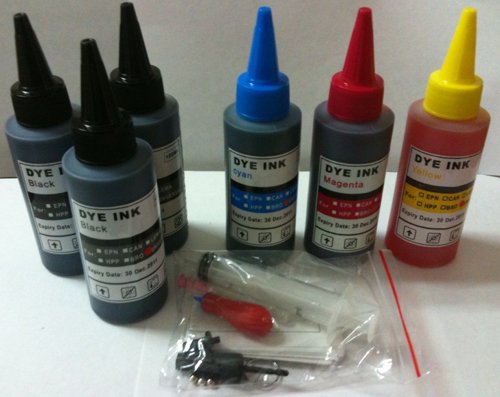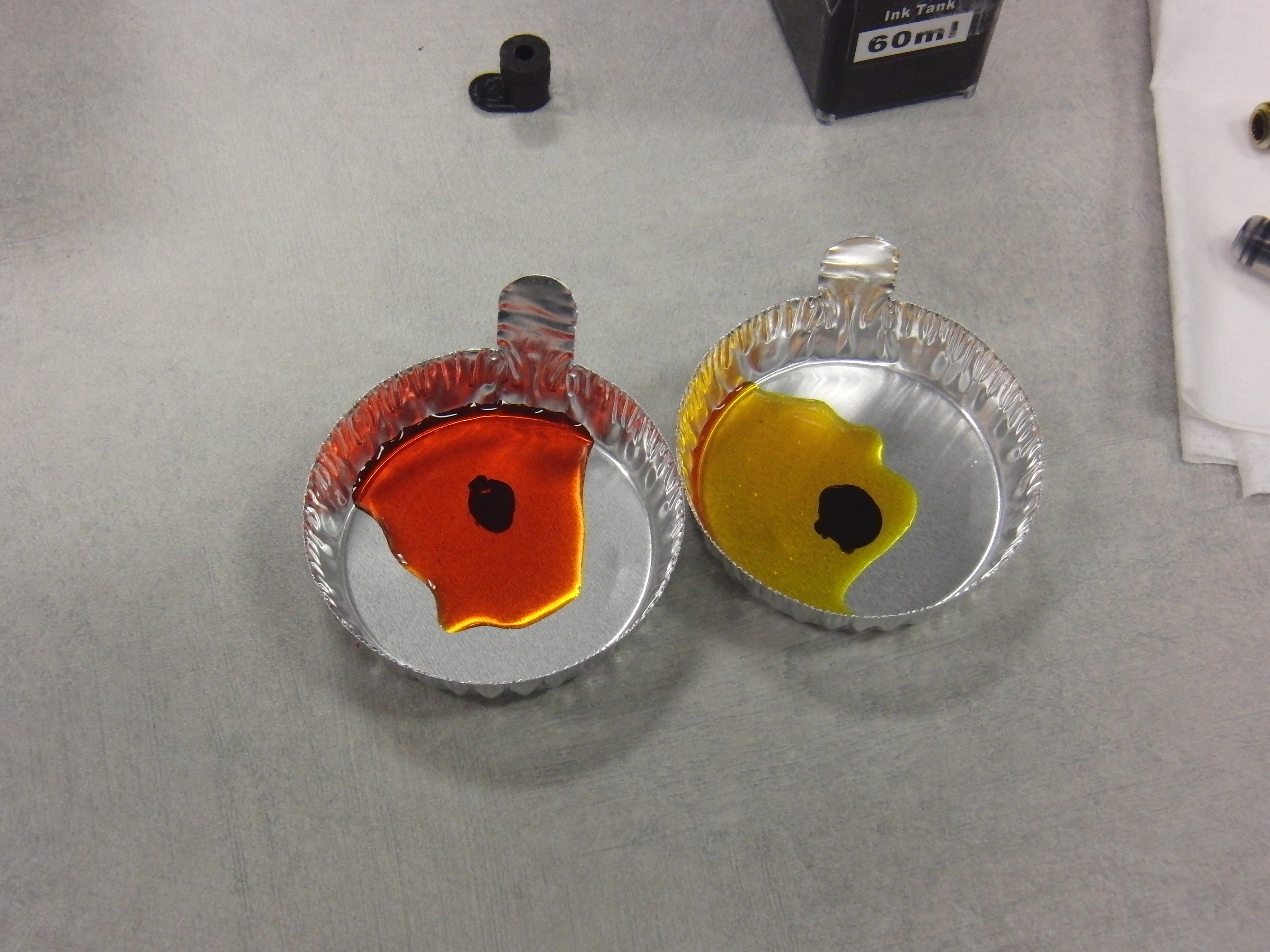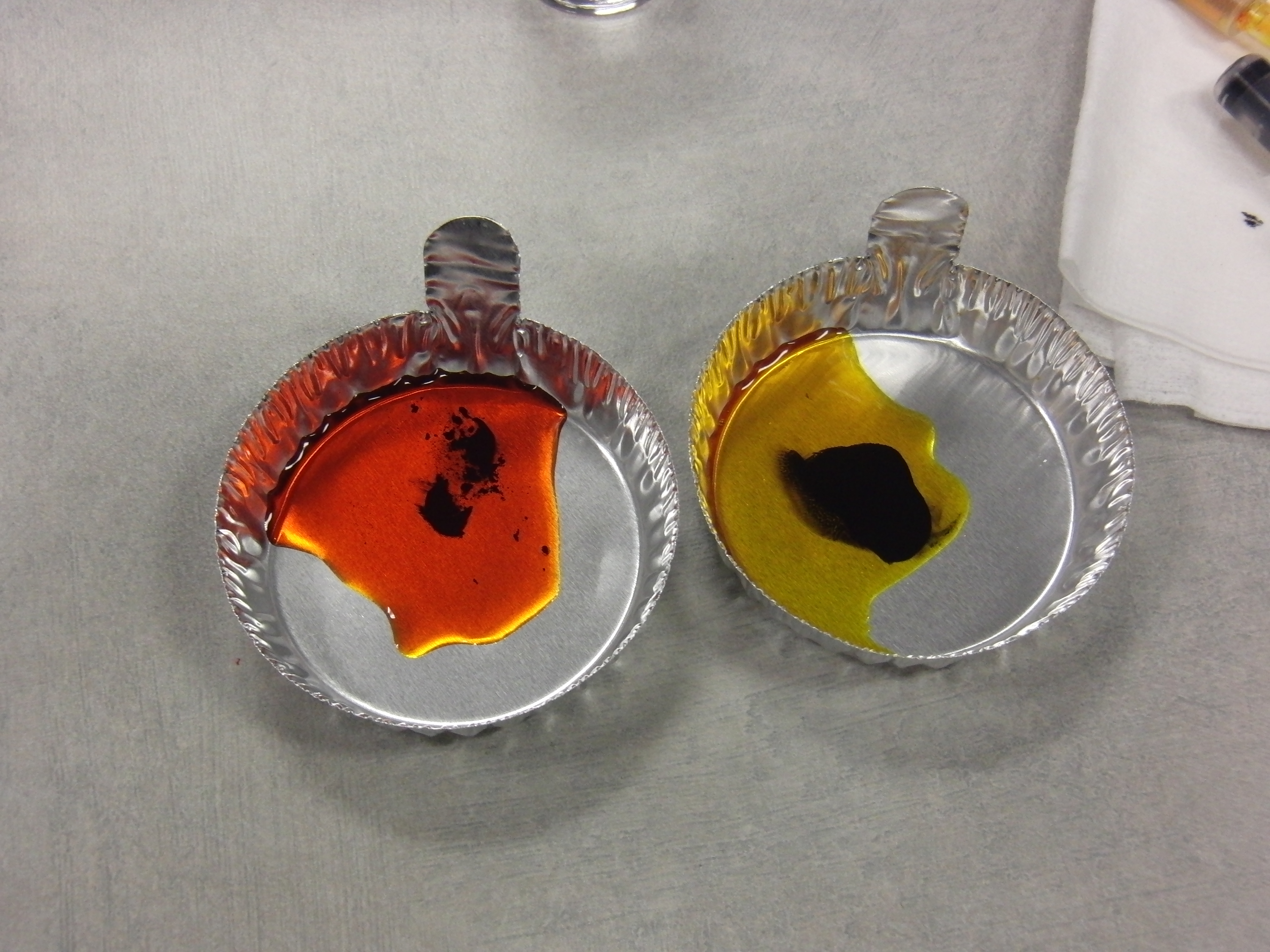Picking The Best Ink And Paper For Your Inkjet Printer
Test Your Ink: Bleed Resistance
If officially-branded inks weren't so expensive, no one would bother with third-party cartridges and refilled ink kits. In reality, you can often buy an entirely new inkjet printer instead of new ink cartridges. Most folks only spend extra on those official inks because they're the safe choice, and they've been conditioned to believe that third-party inks deliver poorer performance.
Usually, that's true only to varying degrees. Official inks offer good quality because the printer company can control the supplier and formulation of the ink before it hits the shelf. There is only one HP ink. There are hundreds of companies offering alternative inks. But there is no regulating body to tell you what is good or bad.
The basic composition of ink is fairly simple. The problem is that third-party inks often skimp on one or two ingredients, which affects some aspect of performance: water resistance, fade resistance, drying speed, and color gamut, for example.
| Water-Based Ink Composition | ||
|---|---|---|
| Component | Function | Composition % |
| Deionized water | Carrier medium | 60-90 |
| Solvent | Viscosity control, humectant | 5-30 |
| Dye or pigment | Colorant, provides color | 1-10 |
| Surfactant | Wetting agent, assists in penetrating paper | 0.1-10 |
| Biocide | Prevents bacterial growth (allows you to use old ink) | 0.05-1 |
| Buffer | Controls pH of ink | 0.01-0.5 |
| Other additives | Chelating agent, defoamer, solublizer | >1 |
Even so, there are ways to make sure that you get quality third-party inks (though they might not be very convenient). Ideally, you want a bleed-resistant ink, and there's an easy way to test this at home.
Procedure:
- Place a few drops of yellow ink into a tray
- Place a single drop of black ink into the pool of yellow ink
- Wait 30 minutes.
Notice how the black ink on the left side stays clumped together. This indicates high-quality ink because the inks can be expected to dry separately. If the black ink starts to blend into the yellow ink, then you know it's not bleed-resistant, meaning the inks will blend when they're placed on the paper before they even have a chance to dry.
Get Tom's Hardware's best news and in-depth reviews, straight to your inbox.
Current page: Test Your Ink: Bleed Resistance
Prev Page Deciphering Photo Paper Next Page Test Your Ink: Stability-
mayankleoboy1 the most interesting thing in this article was the B&W sunlight photo on the third page. awesome photo. can we have some more?Reply -
cmcghee358 I'm not gonna lie, I didn't read this. I read probably 90% of Toms articles because even though they are technical, they are still interesting. The title of this simply turned me off.Reply -
kalidasa Thanks for telling me how I can find my own quality inks and paper for printing. Now I can spend hundreds of dollars testing out the "thousands", as you put it, of third-party suppliers of printing materials.Reply
paraphrase of this article: We don't endorse buying first party, brand-name inks and paper; we're just here to tell you the extremes you can go through to find an alternative! p.s. HP is great! -
iam2thecrowe there is only one simple answer to "what is the best ink/paper for my printer". The answer is only the manufacturer of the printer makes the correct ink that and paper suitable for the printer that will yield consistantly good results for photos and prevent the head from getting clogged. The manufacturer pre-sets settings in the driver to deliver the right amount of a particular ink to a particular weight/absorbancy of paper. Use those presets with other paper/ink and you will get varied results. When you work fixing printers for a few years you will understand this is fact, not just manufacturers trying to sell overpriced ink. And you also have to remember that overpriced ink is there to make up for the losses they make on low end $50 printers.Reply -
TonyJ No mention of Ilford paper and Hobbicolor ink. Very basic overview... Try the photo printing forums for better advice.Reply -
I switched from using vendor inks a long time ago due to the massive cost of a full set of 8 cartridges (approx £25 each) and as most of my printing is general documentation the extra cost cannot be justified. When the printer isn't used for a few weeks/months the heads do clog but this also happened with the vendor inks and wasting the expensive ink to run the cleaning program and the test page is just painful to watch, this is a fraction of the cost with the non-vendor inks.Reply
Fade can be an issue on the photos that are left in direct sunlight (conservatory) but there is always the option to take the image to a kiosk for a better quality print, or simply print a different picture for the frame.
I don't keep large collections of printed photos in albums so I guess I might think differently if I did.
-
mayankleoboy1 i feel this article was just to fill the gap between something big thats coming up tomorrow or by monday.Reply
could it be BD? you guys probably have a sample but it must be under NDA -
Arbie More than print quality, my biggest problem is that the cartidges go dry = empty all by themselves, just sitting there for a few weeks. This is in a Canon ip-4000 printer. Leakage of so much ink would be obvious, so it isn't that. It just disappears. I live in a dry climate, but all of the ink including pigment is gone so it doesn't seem to be evaporation. It's as if the cartridges had simply been used up, which I know hasn't been done since only I have access to the printer.Reply
==> Does anyone else have this problem? Put in all new cartridges, print two or three pages, let it sit for several weeks and then find one or two cartridges almost empty? BTW I'm using cheap ebay cartridges, and don't plan to spend the money it would take to install a set of Canon units unless that's known to be the cure. I can't remember how the first set of (Canon) cartridges fared.
Thx - Arbie -
TonyJ Arbie...my biggest problem is that the cartidges go dry = empty all by themselves... - ArbieReply
Make sure to turn your printer off when you aren't using it. If it cycles on and off with your computer, it will cycle through its cleaning process each time. That could be your problem...


